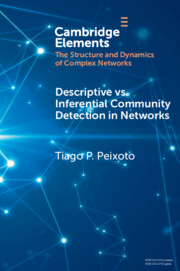Refine search
Actions for selected content:
48202 results in Computer Science
A NATURAL DEDUCTION SYSTEM FOR ORTHOMODULAR LOGIC
- Part of
-
- Journal:
- The Review of Symbolic Logic / Volume 17 / Issue 3 / September 2024
- Published online by Cambridge University Press:
- 10 July 2023, pp. 910-949
- Print publication:
- September 2024
-
- Article
-
- You have access
- Open access
- HTML
- Export citation
Neuro-Symbolic AI for Compliance Checking of Electrical Control Panels
-
- Journal:
- Theory and Practice of Logic Programming / Volume 23 / Issue 4 / July 2023
- Published online by Cambridge University Press:
- 10 July 2023, pp. 748-764
-
- Article
- Export citation
A locally time-invariant metric for climate model ensemble predictions of extreme risk
-
- Journal:
- Environmental Data Science / Volume 2 / 2023
- Published online by Cambridge University Press:
- 07 July 2023, e26
-
- Article
-
- You have access
- Open access
- HTML
- Export citation
Selecting robust features for machine-learning applications using multidata causal discovery
-
- Journal:
- Environmental Data Science / Volume 2 / 2023
- Published online by Cambridge University Press:
- 07 July 2023, e27
-
- Article
-
- You have access
- Open access
- HTML
- Export citation
An approach for including social impact measures in systems design exploration
-
- Journal:
- Design Science / Volume 9 / 2023
- Published online by Cambridge University Press:
- 06 July 2023, e16
-
- Article
-
- You have access
- Open access
- HTML
- Export citation
Integrating Logic Rules with Everything Else, Seamlessly
-
- Journal:
- Theory and Practice of Logic Programming / Volume 23 / Issue 4 / July 2023
- Published online by Cambridge University Press:
- 06 July 2023, pp. 678-695
-
- Article
- Export citation
Automatic Differentiation in Prolog
-
- Journal:
- Theory and Practice of Logic Programming / Volume 23 / Issue 4 / July 2023
- Published online by Cambridge University Press:
- 06 July 2023, pp. 900-917
-
- Article
- Export citation
How do we engineer trustworthy digital twins?
-
- Journal:
- Research Directions: Cyber-Physical Systems / Volume 1 / 2023
- Published online by Cambridge University Press:
- 05 July 2023, e3
-
- Article
-
- You have access
- Open access
- HTML
- Export citation
Statistical constraints on climate model parameters using a scalable cloud-based inference framework
-
- Journal:
- Environmental Data Science / Volume 2 / 2023
- Published online by Cambridge University Press:
- 05 July 2023, e24
-
- Article
-
- You have access
- Open access
- HTML
- Export citation
An Interleaving Semantics of the Timed Concurrent Language for Argumentation to Model Debates and Dialogue Games
-
- Journal:
- Theory and Practice of Logic Programming / Volume 23 / Issue 6 / November 2023
- Published online by Cambridge University Press:
- 05 July 2023, pp. 1307-1333
-
- Article
- Export citation
The codegree Turán density of tight cycles minus one edge
- Part of
-
- Journal:
- Combinatorics, Probability and Computing / Volume 32 / Issue 6 / November 2023
- Published online by Cambridge University Press:
- 05 July 2023, pp. 881-884
-
- Article
-
- You have access
- Open access
- HTML
- Export citation
An Efficient Solver for ASP(Q)
-
- Journal:
- Theory and Practice of Logic Programming / Volume 23 / Issue 4 / July 2023
- Published online by Cambridge University Press:
- 05 July 2023, pp. 948-964
-
- Article
-
- You have access
- Open access
- HTML
- Export citation
A (machine-oriented) logic based on pattern matching
-
- Journal:
- Mathematical Structures in Computer Science / Volume 33 / Issue 7 / August 2023
- Published online by Cambridge University Press:
- 05 July 2023, pp. 647-659
-
- Article
- Export citation

Descriptive vs. Inferential Community Detection in Networks
- Pitfalls, Myths and Half-Truths
-
- Published online:
- 04 July 2023
- Print publication:
- 31 August 2023
-
- Element
-
- You have access
- Open access
- HTML
- Export citation
Introduction to the 39th International Conference on Logic Programming Special Issue
-
- Journal:
- Theory and Practice of Logic Programming / Volume 23 / Issue 4 / July 2023
- Published online by Cambridge University Press:
- 04 July 2023, pp. 624-631
-
- Article
-
- You have access
- HTML
- Export citation
Understanding cirrus clouds using explainable machine learning
-
- Journal:
- Environmental Data Science / Volume 2 / 2023
- Published online by Cambridge University Press:
- 04 July 2023, e19
-
- Article
-
- You have access
- Open access
- HTML
- Export citation
Clustering of causal graphs to explore drivers of river discharge
-
- Journal:
- Environmental Data Science / Volume 2 / 2023
- Published online by Cambridge University Press:
- 04 July 2023, e25
-
- Article
-
- You have access
- Open access
- HTML
- Export citation













